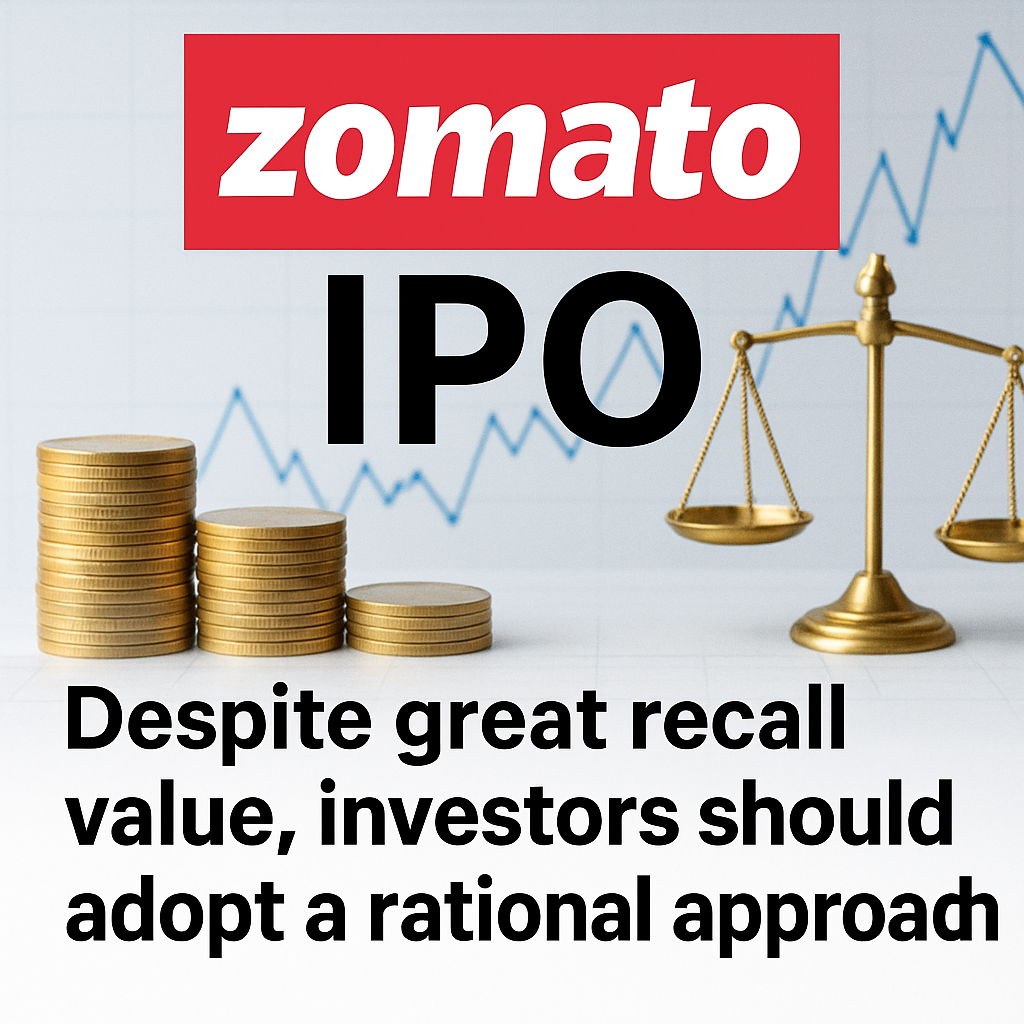Announcement: Lorem ipsum dolor sit amet, consectetur adipiscing elit. Donec et quam blandit odio sodales pharetra.
Despite great recall value, investors should adopt a rational approach
The much talked about IPO of Zomato is finally here and it opens for subscription on 14 July. As of now there is a lot of euphoria surrounding the IPO. However, investors must make a more rational decision when it comes to the IPO.

Table of Content
Great brand recall
At the outset, here is a household brand with tremendous recall. You just need to track Zomato on Twitter to understand some of the records they are setting in terms of new customers acquired, total number of customers serviced, the total number of orders serviced etc. Today, if you want to order any kind of food, the first thing you do is to swipe the Zomato app. So, Zomato is clearly a household name and a powerful brand. But, that is just one side of the story of Zomato.
Right place at right time
The biggest advantage for Zomato is it is in the right market, with the right set up and at the right time. Many marquee names like Ant Financial, Softbank and T Rowe Price are among the investors in the Zomato story. Zomato essentially caters to the Indian market, which is the world’s fastest growing digital as well as consumption market. Then there is the bigger story of how Zomato has been consistently narrowing its losses and most of its initial thrust is done for now. It is time for Zomato to reap benefits of all the effort, and investing in the IPO will give the perfect platform for that.
Beware of bulky valuations
The issue with Zomato is not just about the losses it is making. That is true of most of the ecommerce plays globally. They have made losses for many years before they managed to break even. The real issue is whether the IPO will leave a lot on the table for investors. The company is likely to be valued at around $8 billion on listing. Remember, Zomato faces tough competition in India from Swiggy and there are big names like Paytm who are now getting into almost everything combined with their own payment ecosystem. Whether, the Zomato model can really turn around quickly and build on profits to justify the valuations still remains to be seen.
Investors must decide rationally
The good thing is that Zomato has a 75% allocation for QIBs, 15% for HNIs and just about 10% for retail. So total retail portion is just about Rs.930 crore, which is not too difficult to absorb and even show decent oversubscription. The bigger question is what happens after that? What investors need to realize is that mega IPOs have struggled to live up to expectations in the past and that will be an overhang on Zomato. Those who are looking to participate in a smart digital story from a long-term point of view may be better off. However, those looking for listing gains may find the going a lot tougher. Investors must take a rational business decision here!
Comments